Recent Posts
Weakening foundations: Unveiling the hidden structural damages beneath the surface of your West El Paso home.
1/26/2024 (Permalink)
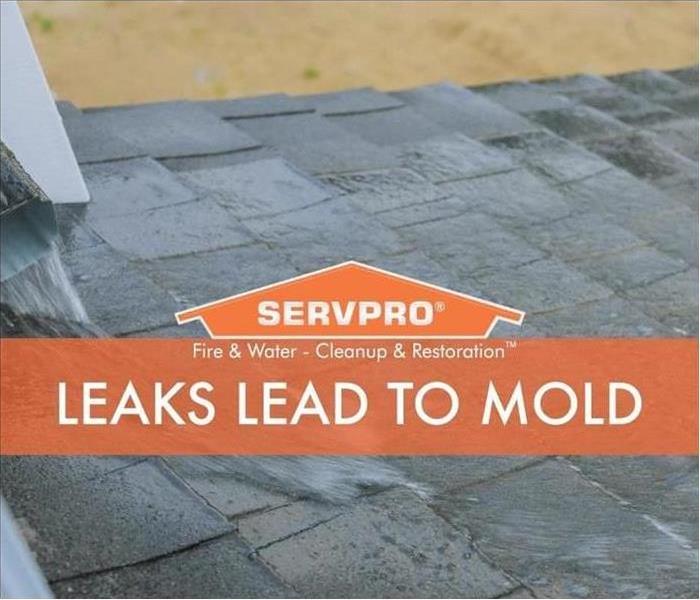 Rain hitting a possibly damaged room with the SERVPRO logo and text "Leaks Lead To Mold".
Rain hitting a possibly damaged room with the SERVPRO logo and text "Leaks Lead To Mold".
While storms bring immediate visible damage to West El Paso homes, one of the most concerning aspects is the hidden structural damage that can occur beneath the surface. Stormwater infiltration can weaken the foundation upon which your home stands, posing a significant risk to its stability and long-term integrity.
When excess water saturates the ground surrounding your home, it can seep into the foundation, causing soil erosion and compromising its structural support. Over time, this can lead to foundation settling, shifting, or even cracking, endangering the overall stability of the entire structure.
Furthermore, water-damaged foundations create an environment ripe for further deterioration. Moisture trapped within the foundation can contribute to the growth of mold and rot, further compromising its strength. The weakened foundation can affect the alignment of walls, floors, and even the roof, leading to a range of structural issues that require immediate attention.
At SERVPRO of West El Paso, we recognize the gravity of weakening foundations caused by water damage. Our skilled team conducts thorough inspections to assess the structural integrity of your home. We employ proven techniques to address foundation issues, such as drainage solutions, waterproofing strategies, and reinforcement methods. By addressing the hidden damage beneath the surface, we ensure that your home stands on a solid foundation, ready to weather future storms with resilience.
Inundation and its aftermath: The immediate impact that leaves no corner untouched at your West El Paso home or business.
1/26/2024 (Permalink)
 Faster to any Disaster. SERVPRO offers 24/7 Storm Damage Services.
Faster to any Disaster. SERVPRO offers 24/7 Storm Damage Services.
When a storm unleashes its full fury, the result is a powerful inundation that spares no corner of your West El Paso home. The rapid influx of water infiltrates every nook and cranny, leaving behind a trail of destruction. Water enters every crevice from the ground floor to the upper levels, leaving no area untouched.
As the water invades your living spaces, furniture, carpets, and belongings are soaked, bearing witness to the storm's force. Floors become slippery, making movement treacherous. Electrical systems are compromised, raising safety concerns. The immediate aftermath can leave you overwhelmed and confused.
Visible damage is only part of the story. Water seeps into hidden recesses and beneath floorboards, causing additional harm. Structural elements may weaken over time. Immediate action is crucial to prevent further deterioration and minimize long-term consequences. SERVPRO of West El Paso recognizes the urgency of addressing the immediate impact of inundation. Our experienced team arrives swiftly, equipped with the tools and expertise to extract standing water and begin drying.
Call the experts at SERVPRO today and let us handle all of your water and storm remediation needs for your home or office.
The deluge begins: Unleashing the relentless power of heavy rainfall to your West El Paso home.
1/26/2024 (Permalink)
 The SERVPRO Team is headed to their next job! Faster to any Disaster!
The SERVPRO Team is headed to their next job! Faster to any Disaster!
When the heavens open up and heavy rain pours down, it begins a deluge that unleashes the relentless power of nature. West El Paso homes, usually safe and secure, become vulnerable to the onslaught of water. The sheer force and volume of the rainfall can quickly overwhelm drainage systems, saturating the ground and infiltrating every possible opening in your home.
As the rain intensifies, the risk of water damage increases exponentially. Roofs, windows, and doors become the front line, facing the unyielding assault. Even the smallest cracks or compromised seals can allow water to seep in, finding its way into your sanctuary. Unrelenting in its determination, the water creeps through walls, ceilings, and floors, wreaking havoc in its path.
The immediate consequences of heavy rainfall are evident: standing water accumulating in basements, flooded rooms, and dampened carpets. The impact is not limited to visible areas alone; hidden moisture pockets can develop within walls, inviting mold growth and compromising structural integrity. The longer the water remains stagnant, the greater the risk of extensive damage and costly repairs.
SERVPRO of West El Paso is here to help you with all of your water and storm damage. Contact the professionals today.
A lingering threat: The insidious dangers that persist to your West El Paso home long after the storm subsides.
1/26/2024 (Permalink)
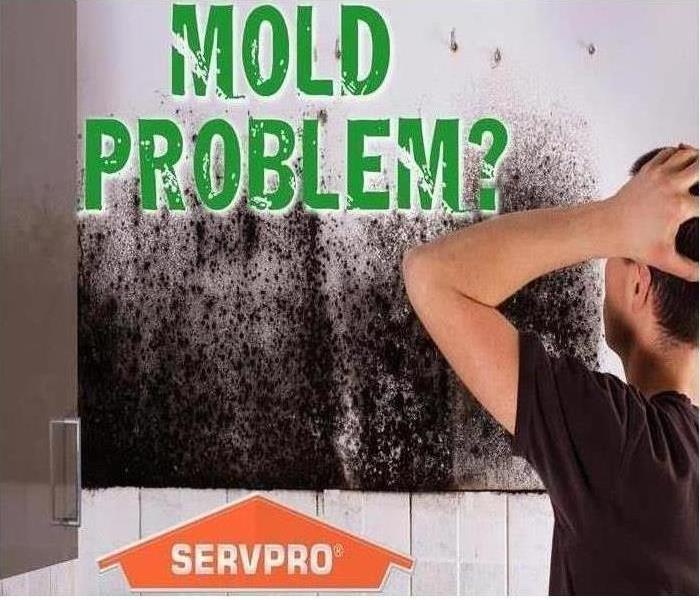 Don't let uncontrolled mold growth ruin your walls. Let the SERVPRO team help to get it under control.
Don't let uncontrolled mold growth ruin your walls. Let the SERVPRO team help to get it under control.
Even after the storm clouds disperse and the rainfall ceases, West El Paso area homes grapple with a lingering threat that extends far beyond the immediate impact. The insidious dangers of water damage persist, quietly wreaking havoc on your property long after the storm subsides.
One of the primary concerns is the hidden presence of moisture. While the visible signs of water damage may fade, residual moisture can linger within walls, beneath flooring, and in hard-to-reach spaces. This hidden moisture becomes a breeding ground for mold and mildew, which can rapidly increase and pose risks to both the structural integrity of your home and your health.
If left unchecked, mold growth can lead to various health issues, including allergies, respiratory problems, and even worsening conditions. Additionally, prolonged exposure to moisture can weaken building materials, compromising the stability and safety of your home over time.
Another lingering threat is the potential for long-term water damage effects, such as warped or weakened surfaces, stained walls, and deteriorated finishes. These issues not only detract from the aesthetic appeal of your home but also decrease its value. If left unaddressed, water damage can spread further and affect adjacent areas, exacerbating the scope of restoration required.
Telltale Signs That Water Has Entered Your Walls.
1/20/2024 (Permalink)
 SERVPRO Van with "Faster to any Disaster" on the back.
SERVPRO Van with "Faster to any Disaster" on the back.
Most times, it is easy to tell when you are dealing with water damage that has managed to spill into the wall of your Southeast El Paso/Butterfield home. Some of the identifiable signs of wall water damage include:
Wallpaper or paint starts peeling
One of the most obvious signs that there is water behind your wall is you notice that your wallpaper or paints have started peeling. This often happens when your sheetrock has absorbed too much water. Other related signs pointing to wall water damage are flaking paints or the opening of a wallpaper at the seams.
Mold growth
Mold typically grows in areas that have excess moisture such as bathrooms, kitchens, or basements. But if you notice mold growing on walls, especially in areas distant from plumbing fixtures, there are chances there is moisture trapped behind your walls.
But unlike peeling or flaking of wallpapers and paint which may take days to show, mold growth takes between 24 and 48 hours to grow on your wall if there is too much moisture.
Warping
Have you noticed warping around your house? It may be time to look around the house for possible water damage to your wall. Oftentimes, warping occurs when there is too much water trapped in the sheetrock behind your walls. That said, warping on the wall is a strong indicator that there is water penetration somewhere in the house.
Musty smell
When excess water or moisture is trapped in materials such as drywall, wood, or plasterboard, it can cause moldy and musty odor. As mentioned earlier, wall cavities with trapped moisture are a breeding ground for mold, which comes with an unpleasant smell.
Therefore, if you perceive a strong odor coming from your walls, that could be a sign that water has penetrated your wall.
Visible stains around the wall
Another prominent sign of water accumulating in the drywall is noticeable staining around the wall. If the stains continue to expand, it is an indicator that there is a hidden plumbing failure in your home.
If you suspect that you have water damage in your home, call the professionals at SERVPRO of Southeast El Paso/Butterfield today!
What You Can Do If You Find Mold In Your Southeast El Paso/Butterfield Home or Business!
1/20/2024 (Permalink)
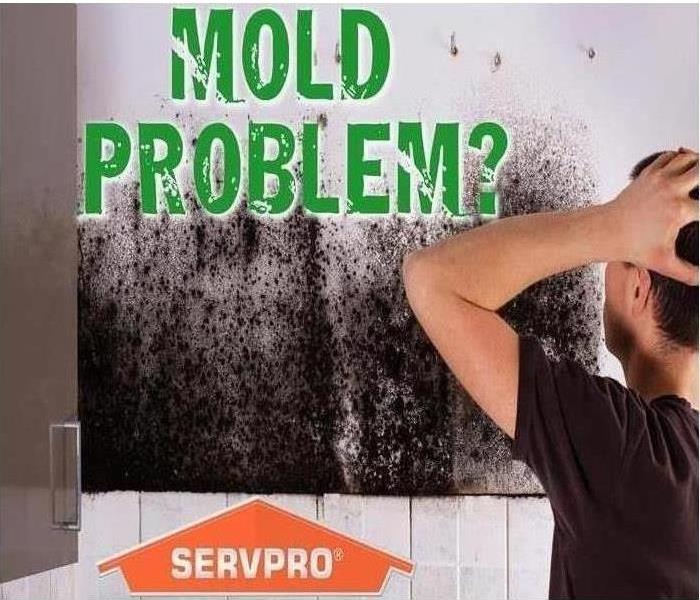 Damage to a ceiling resulting from mold growth.
Damage to a ceiling resulting from mold growth.
Our Southeast El Paso/Butterfield team is trained and certified to restore mold outbreaks by the Institute for Inspection Cleaning and Restoration Certification (IICRC) in El Paso, TX. We have the training, equipment, and experience to restore areas compromised by mold quickly and efficiently. Here are some mold damage emergency tips from our website for things you can do and should not do while waiting for help to arrive:
What to Do
- Stay out of affected areas
- Turn off the heating, ventilation, and air conditioning (HVAC) system and fans
- Contact our Southeast El Paso office for mold remediation services
What Not to Do
- Don’t touch or disturb the mold
- Don’t blow air across any surfaces with visible or suspected mold growth
- Don’t attempt to dry the area yourself
- Don’t spray bleach or other disinfectants on the mold
Call Us!
When you discover a mold problem in your Southeast El Paso/Butterfield commercial business, our team is available to help! We’ll clean and restore the mold damage “Like it never even happened.” Contact us today.
Why Is Drywall Removed After a Water Loss?
1/20/2024 (Permalink)
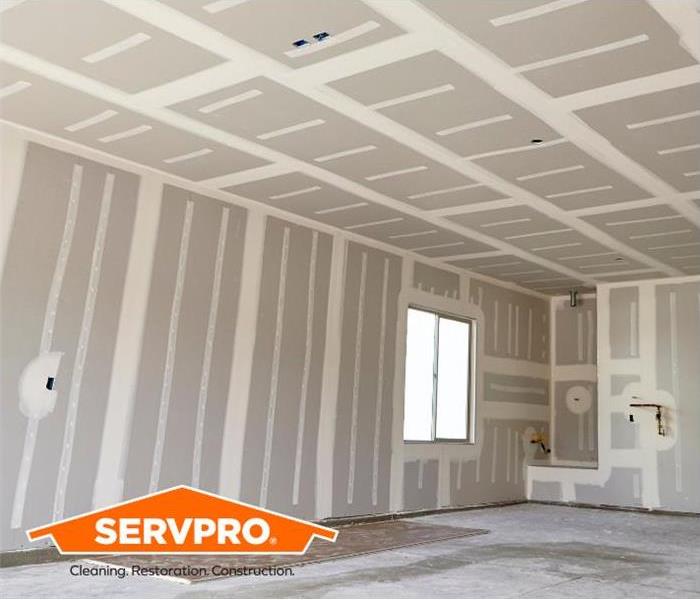 A room that has had all of its drywall removed and then replaced and taped off due to a water loss.
A room that has had all of its drywall removed and then replaced and taped off due to a water loss.
Why does drywall need to be removed and not dried after a water loss?
In most cases, drywall can be dried within 3 to 5 days when drying equipment is placed by a restoration company. However, in some cases, the drywall will require removal due to certain circumstances during water damage.
- If drywall is affected by "grey or black water" that carries contaminates- The drywall will have to be removed and replaced.
- If drywall has wet insulation in the wall cavities, the drywall and insulation will have to be removed and replaced.
- If drywall has double layers, the Drywall's layers will have to be removed and replaced.
- If drywall was not professionally dried and secondary damages occurred- The drywall will have to be removed and replaced.
Suffering from a water loss is never easy, but we are here to help minimize the impact it has on your family. Give your team at SERVPRO of Southeast El Paso/Butterfield a call 24/7 to see how we can help mitigate any water damage your home or business may experience!
How To Get The Most Out Of A Partial Loss
8/2/2023 (Permalink)
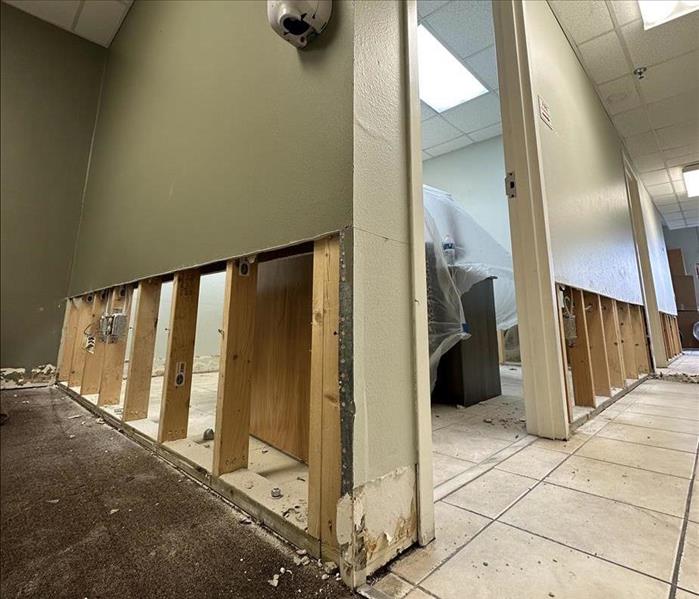 Drywall Removal.
Drywall Removal.
A commercial fire can be devastating, both financially and structurally, as it often results in the triple threat of fire, water, and smoke damage. Not only is the area where the fire most likely damaged, but so can other areas of the building due to traveling smoke and soot through the vents. Try following the next steps in order to maximize your recovery and get your business back up and running.
?• Southeast El Paso/Butterfield team to perform a thorough inspection and document damage.?• Document everything that was damaged or destroyed, even if you're not sure it's worth documenting.?• To the best of your ability, check for mold, smoke, soot, and other irritants. Our team can handle anywhere that is too difficult for you to handle.??Most insurance adjusters won't accept a fire loss claim without the findings of a thorough inspection. You must call in a licensed contractor who can walk through your building and inspect the roof, structure, siding, windows, insulation and plumbing, and HVAC systems. The contractor can provide an official report that itemizes damages and losses. This is called an adjusters report.??Most insurance companies are required to cover mold, smoke, or soot restoration, so long as the damage was from the recent disaster. Have your inspector check for any irritants so that you can request remediation.??In the event some things are not covered you are able to claim unreimbursed losses on your tax returns.
It is important to have a professional mitigation team on speed dial to handle any disasters your business may face. Contact the professionals at SERVPRO today!
Here Are 8 Reasons Why Your Toilet Might Be Leaking!
8/2/2023 (Permalink)
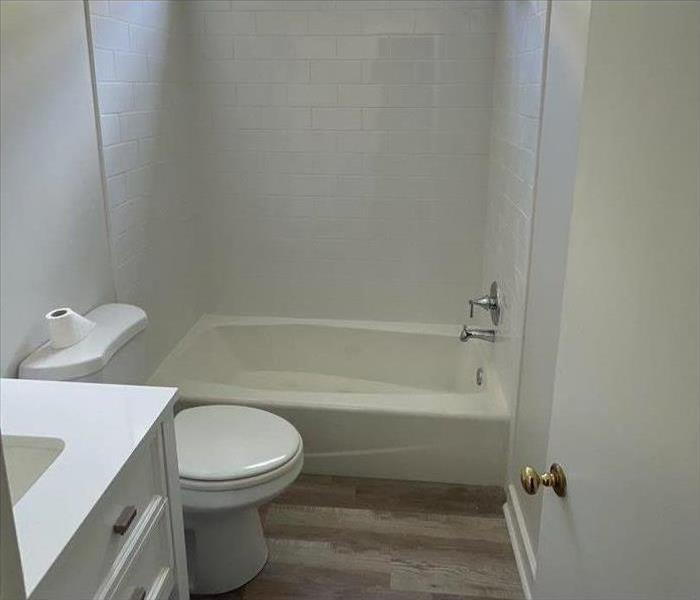 Leaking toilet can cause damages.
Leaking toilet can cause damages.
We have all walked past the bathroom and hear the water running in the back of the toilet and either jiggled the handle or lifted the back to see if anything was obviously wrong. Water leaking around your toilet can soak into the floor and beyond. It is important to take action if you see a puddle of water around the toilet bowl or even hear a slow drip somewhere behind the wall.
1. Tank is Cracked
While tanks and the bowls are pretty durable, they can get cracks. These often start with a small, hairline crack, but can get bigger. Toilets may get shifted or jarred and can get cracked in the back where you won’t notice them.
2. Worn Washers
There are two large bolts that keep the tank attached to the bowl, and two more that keep the toilet bolted to the floor. If the bolts or washers get stripped, rusted out, break, or wear out, they won’t be able to hold it all together.
3. Pipe Corrosion
There could be corrosion in your pipes because of age, impurities in the water, or heavy metals in your water. Rust will develop in the metallic portions of the toilet because of this corrosion.
Pipe corrosion can often cause a lot of damage because you often don’t know it is even there.
4. Float
The float is the hollow ball that floats on the surface of the water in your toilet tank. It can become unhooked, cracked, or it isn’t lined up properly, the fill valve may run too much, causing a leak. The chain may come off, or if it gets a crack, it can take on water and not work properly.
5. Faulty Supply Line
If there is any kind of damage to supply lines, it can put a major strain on your toilet. Sometimes, if the joints in a supply line come undone and break down, water starts to drip out. The rubber lining in a supply line can also start to leak after several years.
6. Worn-Out Fill Valve
The fill valve on the toilet can also wear down over time. This is often due to mineral deposits, but they can also rust. If enough builds up to warp the fill valve, it can stop working properly, preventing your toilet from shutting off and causing leakage.
7. Stuck or Worn-out Flapper
The flapper is that plug in the bottom of your tank. It releases the water when you flush. If it gets stuck, either open or closed, you have a problem. This can also happen if your handle is stuck.
If the flapper is stuck open, the fill valve will not shut off, so it will just keep running. If the flapper wears out, no longer fits properly, or gets a tear, then it will not be able to regulate the water in the tank.
8. Broken Connections
Your toilet has many different connectors that prevent water leaks. If any of these connections lose their seal, water may end up on your bathroom floor. You can check your toilet’s connections to see if there are any problems before they turn into leaks.
If you find you are dealing with a water loss from any of the above issues, call a plumber to address the leak. Once the leak is fixed SERVPRO of West El Paso is here to help! We can make sure the area is dry and help prevent further issues like microbial growth!
Things To Immediately Do If The Power Goes Out In Your Home Or Office!
8/2/2023 (Permalink)
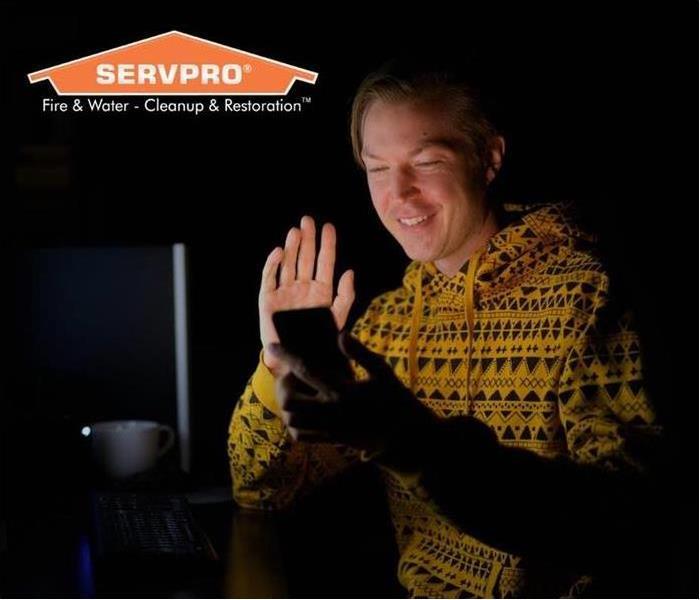 The Lights are Out!
The Lights are Out!
Power outages are especially common in the West El Paso, especially after a storm. It is important to understand what to do during a power outage.
Turn On Your Emergency Lights:
Make sure your emergency lights are somewhere accessible in case you have to find them in the dark. Ideally, keep a flashlight in each room of your home.
In general, it is better to use battery-operated lights instead of candles because of the fire risk.
See If Your Neighbors Have Power:
If your neighbors still have electricity, then the problem is likely inside your home. Start by checking the main fuses or circuit breakers to see if they have blown.
Check the Extent of the Problem:
If your neighbors also don’t have electricity, you’ll want to see how widespread the problem is. You can do this by calling your power supplier.
Contact Family Members:
During large power outages, stoplights and streetlights can go out too – making it unsafe to drive. If your family members aren’t at home, get in contact with them.
Unplug Appliances:
When the power comes back on, it can cause a huge power surge which may damage electronics.
Unplug all your expensive electronics from the wall so they don’t get damaged when the power comes back on.
See if Water is Safe to Drink:
When the power goes out, call your local authorities to see if the water is safe to drink.
Keep Fridge and Freezer Closed:
Food kept in an unopened refrigerator will stay cold for about 4 hours.
A full freezer will keep its temperature for about 48 hours.
Save Your Phone’s Battery:
Turn off any power-consuming apps on your phone to save its battery.
Stay Cool (Summer Power Outages):
If the power outage occurs during a heatwave and you have health conditions, then you might need to evacuate your home to a cooler location, such as a shopping mall or church.
Stay Warm (Winter Power Outages):
If a power outage occurs during winter, now is the time to start using your emergency heating method.
Be cautious about using generators, camp stoves, or grills for heating as they can cause carbon monoxide poisoning.




 24/7 Emergency Service
24/7 Emergency Service









